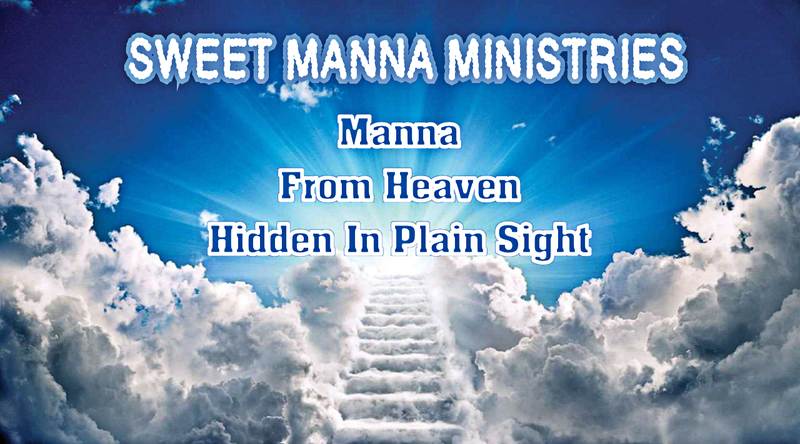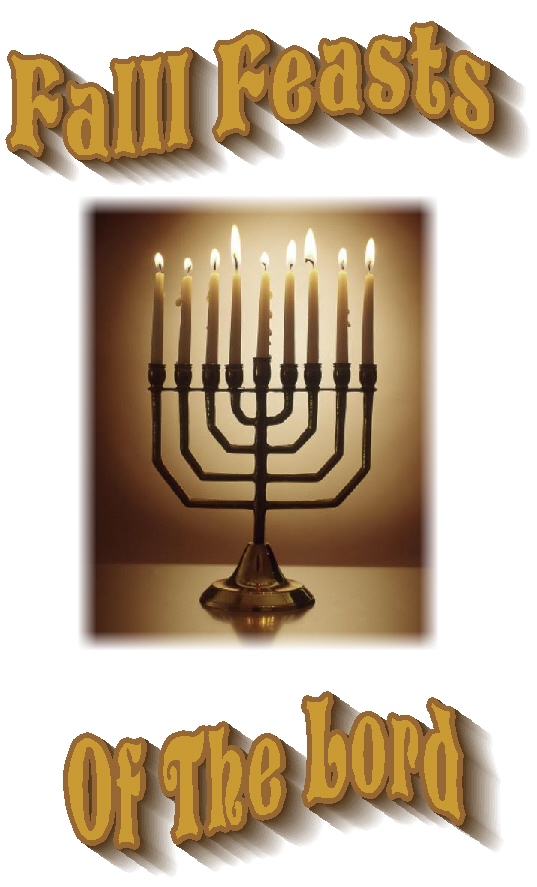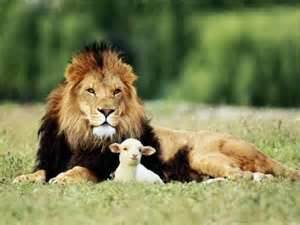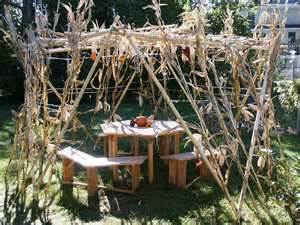The Teaching Ministry of
Rev. Marjorie Kummrow
Bible Studies
This ministry has made a choice to be "Biblically correct" as opposed to "politically correct" therefore we have forfeited the non-profit status available to us. Please note that all donations to this ministry are not tax deductible. Thank you for your support.
The Feast of Tabernacle (Sukkot) Part 1 Next Lesson
The Introduction to Sukkot also known as The Feast of Tabernacles and The Feast of the Ingathering
Sukkot or The Feast of Tabernacles is the culmination of all seven feasts. It is the feast of all feasts and it speaks prophetically of the Millennium reign of The Messiah. It points to the end of days when the Kingdom of God will reach its fulfillment. All of the feasts paint a picture of the history of God with His people.
This final drama of history (His-story) is played out in the seven plus one days of the Feast of Tabernacles that was to begin on the fifteenth day of the seventh month on the biblical calendar, which is the 15th of Tishrei. This date changes on our Gregorian calendar every year; but is celebrated in late September or early October. This most joyous of all feasts follows the most sober of feasts. The High Holy days that proceed the Feast of Tabernacles is a clear call for people to repent; before it is too late and the gates are closed and judgment falls. My previous studies detail the significance of the High Holy days that precede The Feast of Tabernacles. Originally Israel passed through the season of repentance and redemption to enter into the season of their joy. However the final fulfillment of the fall feasts will be the joyous celebration that follows the Day of Atonement. This festival of rejoicing will be for those who are in Messiah, Jew and Gentile believer alike, and who will have escaped the wrath of God at the end of the age. There are two main themes of the Feast of Tabernacles. First, the time of the feast is in the fall of the year and it correlates with the ingathering of the fall harvest. Secondly it is celebrated by living in temporary booths for seven days. Another important feature is the fact that the feast begins and ends with a Sabbath day of rest.
An interesting side note, before we begin digging for the “sweet manna from heaven that is hidden in plain sight,” is that our National Day of Thanksgiving was patterned after, The Feast of Tabernacles. The Puritans who were well versed in Hebrew 1 understood that one of the features of the feast was expressing joy and appreciation for the provision of the fall harvest. A bountiful harvest was only possible because of the blessing of the Lord. The Thanksgiving holiday in those early days lasted for three days and is thought to have been celebrated in September or October which would have coincided with the time of Sukkot. President Lincoln made Thanksgiving a National holiday and President Roosevelt changed the date to November in 1939. Just a bit of American history that was birthed from the Feast of Tabernacles; that I thought you would find of interest.
Moving on...this first part of the study will be a general overview with more detailed studies to follow. This feast is so full of symbols, remez and typology that there will be several studies that will follow as we dig deeper into the beauty of this feast.
The Feast of Tabernacles is one of three feasts that required a pilgrimage to Jerusalem as mentioned in the previous studies. These are appointed times to meet with the Lord, or dress rehearsals until the time of its fulfillment. As Christians we celebrate the “feast of tabernacles” also known as the “feast of ingathering” because we anticipate our Lord’s return to this earth in His second coming. We celebrate as we wait in anticipation of that glorious day when Jesus will return to further establish His Kingdom here on the earth where He and His Bride will rule and reign for 1,000 years. Just as the spring feasts were established by God the Father to paint us a picture of Yeshua His Son; so have the fall feasts been likewise established. For it’s all about Jesus. From Genesis to Revelation it’s all about Jesus and how He and only He has restored us to the Father; and the feasts are the dramatization of that redemption story.
We will begin by digging into the history of the “Feast of Tabernacles”. First, however, I want to introduce you to the Hebrew meaning of the feast. In Exodus Chapter 23 V. 14 the Lord spoke to Moses saying: “Three times you shall keep a feast to Me in the year: The words “keep a feast” in English has been translated from the Hebrew word hagag. Hagag means to have a festival, to celebrate with dance, to dance in a circle, to assemble with rejoicing. The word tabernacle which is one of the English translated words for the Hebrew word, mishkan found in Exodus 25:9. Mishkan also means dwelling place or habitation. Just one verse earlier the Lord spoke with Moses saying: “And let them make Me a sanctuary that I may dwell among them”. So then, what becomes apparent is that the Lord our God desires to dwell among His people. He also desires that His people have times of refreshing in joyous celebration. In establishing The Feast of Tabernacles He is saying “Let’s have a party…come let’s celebrate with food and with drink and with dancing and with great festivities because your God draws near to you and dwells among you.
The following is the commandment for Sukkot , The Feast of Tabernacles.
Lev. 23:33-44 Then the LORD spoke to Moses, saying, 34 "Speak to the children of Israel, saying: 'The fifteenth day of this seventh month shall be the Feast of Tabernacles for seven days to the LORD. 35 On the first day there shall be a holy convocation. You shall do no customary work on it. 36 For seven days you shall offer an offering made by fire to the LORD. On the eighth day you shall have a holy convocation, and you shall offer an offering made by fire to the LORD. It is a sacred assembly, and you shall do no customary work on it. 37 These are the feasts of the LORD which you shall proclaim to be holy convocations, to offer an offering made by fire to the LORD, a burnt offering and a grain offering, a sacrifice and drink offerings, everything on its day-- 38 besides the Sabbaths of the LORD, besides your gifts, besides all your vows, and besides all your freewill offerings which you give to the LORD. 39 'Also on the fifteenth day of the seventh month, when you have gathered in the fruit of the land, you shall keep the feast of the LORD for seven days; on the first day there shall be a sabbath-rest, and on the eighth day a sabbath-rest. 40 And you shall take for yourselves on the first day the fruit of beautiful trees, branches of palm trees, the boughs of leafy trees, and willows of the brook; and you shall rejoice before the LORD your God for seven days. 41 You shall keep it as a feast to the LORD for seven days in the year. It shall be a statute forever in your generations. You shall celebrate it in the seventh month. 42 You shall dwell in booths for seven days. All who are native Israelites shall dwell in booths, 43 that your generations may know that I made the children of Israel dwell in booths when I brought them out of the land of Egypt.
Now delving into the history of the feast we must return to Mt. Sinai as Moses descends from the mountain the second time carrying the second set of tablets after the Lord has forgiven the Hebrews for their sin of worshipping the golden calf.2 Jewish tradition dates this to be the date of Yom Kippur, the Day of Atonement, and that it was a sign of forgiveness and a symbol of the lasting covenant between God and Israel.3
The tradition of the Jews is that this time of gathering the free will offerings which were the building materials; is that they were gathered just before the seven days that was later designated for the Feast of Ingathering also known as the Feast of Tabernacles, and that the building for the tabernacle began on the 15th of the seventh month.5
We know that the Israelites camped in the wilderness for 40 years and in this time there was a progressive revelation of God and of His instructions in righteous living. Moses records for us sometime later in the above scriptures that the Lord was requiring more from His people. He was calling them to remember “the feasts of the Lord”. Part of the instructions in how to celebrate the “feast of tabernacles” was to build booths to live in for seven days. Moses goes on to explain to the people that the Lord wanted them to dwell in these booths for seven days so “that your generations may know that I made the children of Israel dwell in booths when I brought them out of the land of Egypt”. Sukka is the Hebrew word for our English word booth. Sukka can also mean tabernacle. The sukka is where we get the Hebrew name for the feast, Sukkot. Sukkot is the plural for sukka. I point this out because it is important to understand the intent of the preceding scripture. We miss so much because of the English. When we read the word booth we do not automatically think of a dwelling place for our God to meet with his people, which I believe is the intent in the Hebrew.
Let me if I may, paraphrase the instructions of the Lord for this feast as I understand it. Now I the Lord want you to have a joyous celebration for seven days. I want you to build a dwelling place that you will live in for these seven days because I will meet with you there. It is my desire to dwell among my people and to have a habitation, a home if you will, on the earth where I can commune with my children. I want you to tell your children that I the Lord have brought you out of Egypt and that from that day forward I have made a provision to dwell among my people. This is a feast that I want you to pass on from generation to generation so that every generation can join in on the rejoicing of having their God draw near to them and dwell among them in their temporary homes the sukka. I want you to do this generation after generation because not only is it a joyous time for you now, but it is a rehearsal for a future time when it will be fulfilled in its entirety. A day is coming when I will “tabernacle” with my people for all eternity.
Now fast forward to the day of Pentecost when the Holy Spirit was poured out and He made His presence known by the infilling of the Holy Spirit into hearts of the believers in the Upper room. Jesus promised that he would send the comforter, the One who desired to tabernacle with His people, and He did. From that day forward all who are called by His name is invited to receive Him. He has come to dwell with us and not in a temporary home, or one that has been made with hands, but He has made our hearts His home, His tabernacle. Our hearts have become his sukka, i.e. his dwelling place. Yet this is only part of the story that is dramatized through the feasts. This seventh feast is the prophetic picture of Messiah returning to tabernacle with us here on this earth. Be sure to continue because there is so much more in the studies that follow.
1 When America was first established by the Puritans, who came to be known as the Pilgrims, there was a debate as to whether or not Hebrew should be the language of the land. When the Universities of Harvard, Princeton, Columbia and Yale opened their doors Hebrew was a required language.
2 Ex. 34: 29
3 The Seven Festivals of Messiah, Edward Chumney
4 Ex. 36: 5-7
5 The Seven Festivals of Messiah, Edward Chumney
6 Lev. 23: 43
To continue with Part 2 of this series, click on The Seventh Feast and the Signature of God
In His Service,
Rev. Marjorie
marjorie@sweetmanna.org
If you have any questions, please feel free to email us.
Contact us to be put on our email list at mailinglist@sweetmanna.org or make a prayer request at prayerwarrior@sweetmanna.org
The Feast of Tabernacles
Part 1 of 2
Each feast tells the story of a loving God desiring a family, how sin has spoiled God’s ultimate provision for His family, how God Himself stepped into history (which of course is His-story) and reconciled His family back to Himself through Yeshua, and finally how the Lord will present His family with a New Heaven and a New Earth where evil is vanished and Love is supreme, so that Yeshua and His Bride can live “happily ever after.” WOW! This is some love story!
It was at this time that Moses gave the instructions to the children of Israel for the building of the tabernacle in the wilderness. It was to be a place where the Lord God could dwell among His people. The materials for the construction of the tabernacle were the free will offerings from the men and from the women in the assembly. In fact they had to be told not to bring any thing more because they had brought more than enough. 4 These building materials, the gold, the silver, and various offerings must have been the booty given to the Israelites from the Egyptians when they left Egypt.



